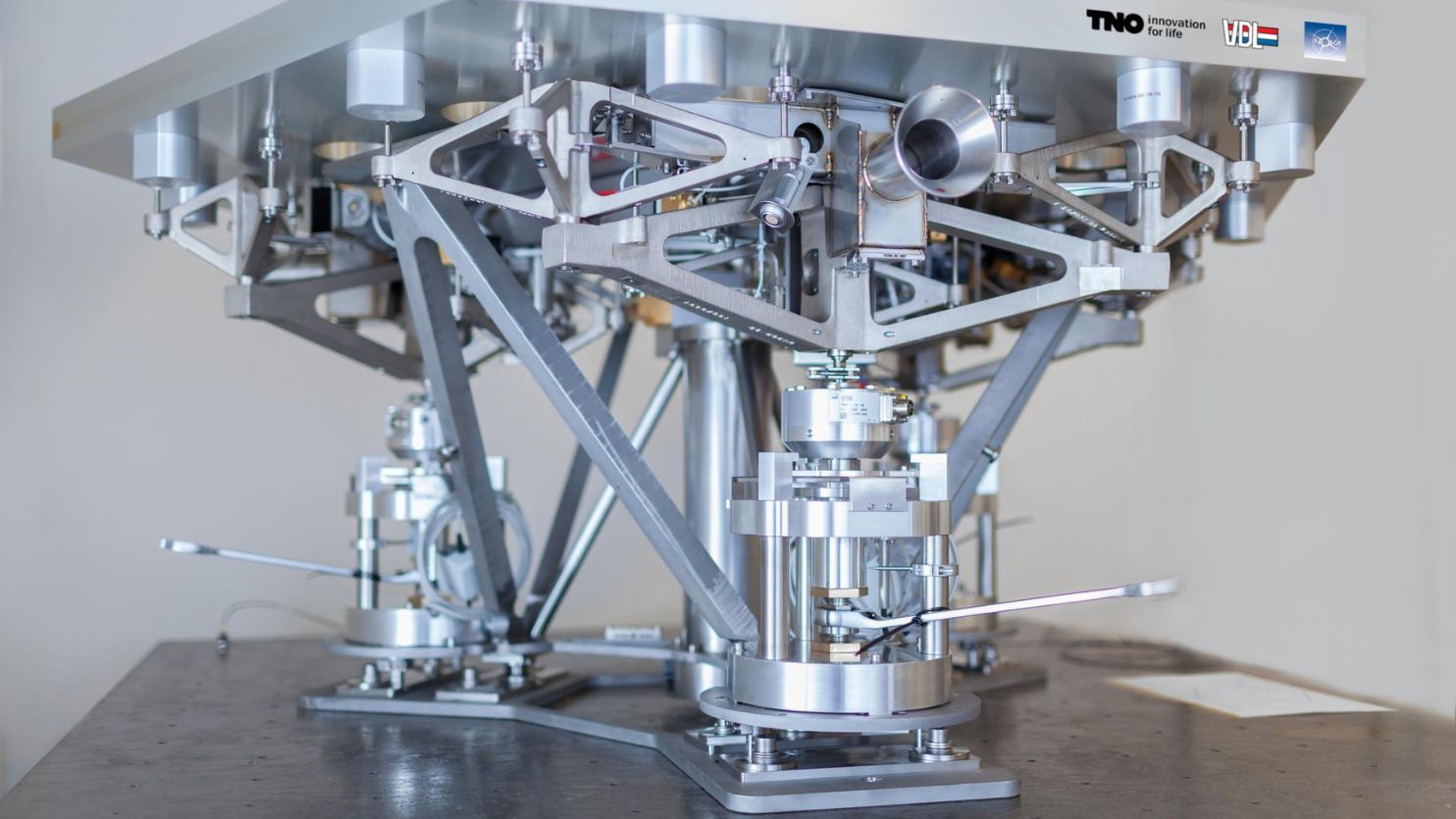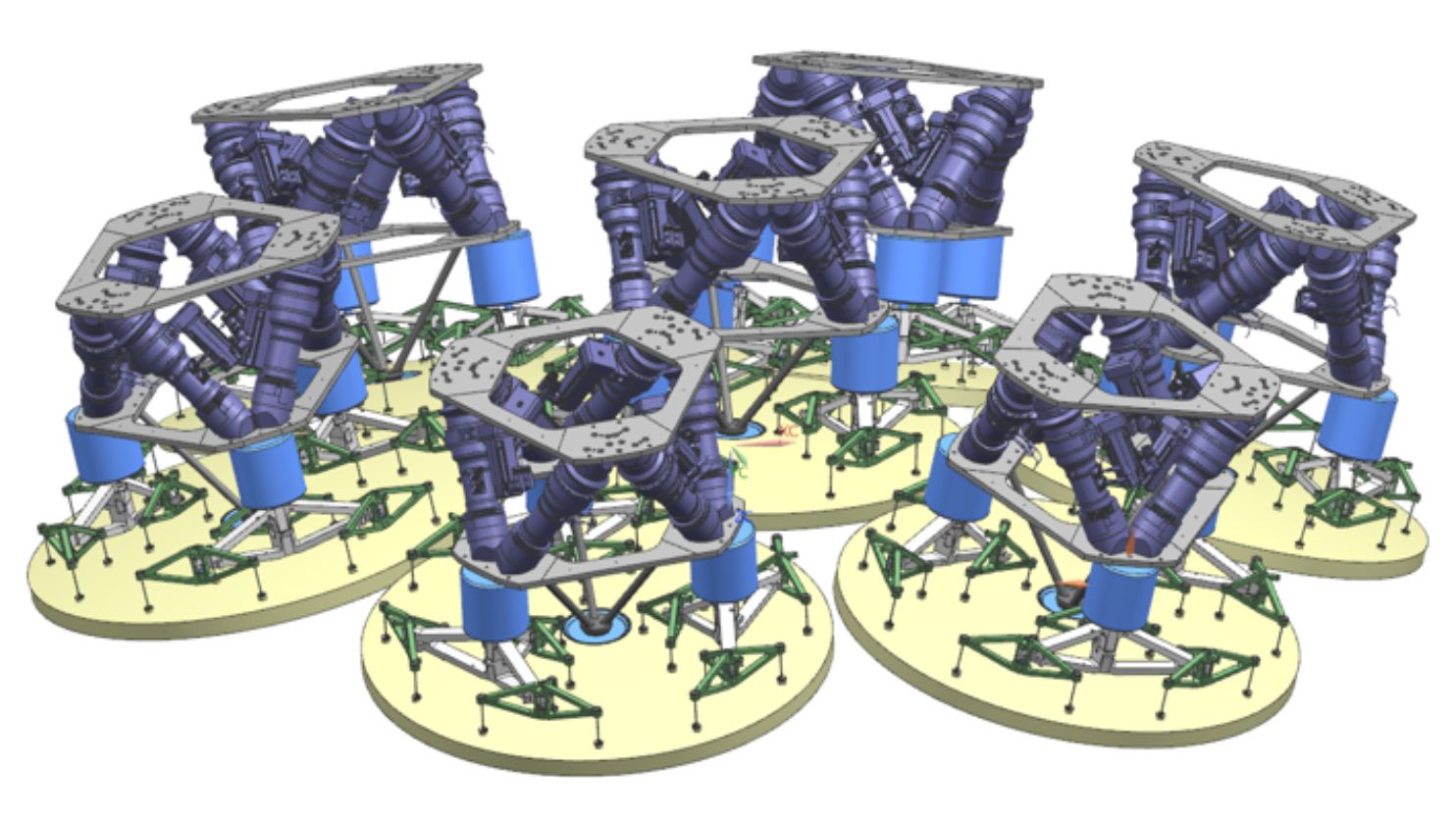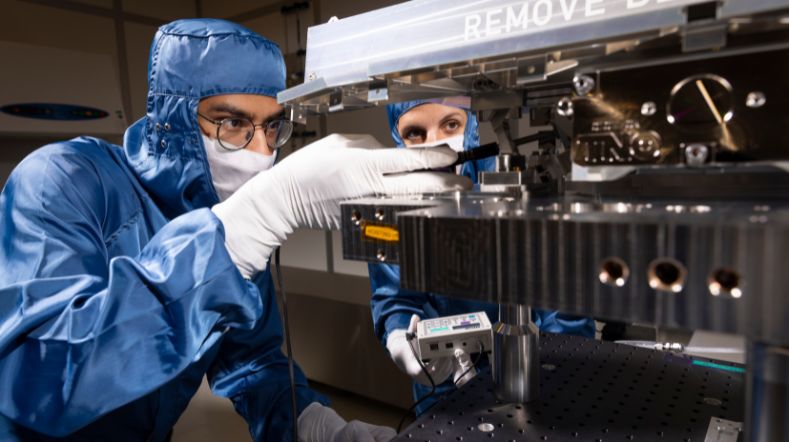
Support structures for large and segmented mirrors
Large telescopes in particular face new challenges as a result of unprecedently large optics. Maintaining surface form and segmented mirror co-phasing requires precision-actuated mirror mounts and control systems that must utilize actuators to sub-Lambda accuracy in real time. TNO has designed and built such systems.
Design solution taken into practice
After over a decade of competitive prototyping and knowledge development, the TNO design solution was adopted by ESO for the 39-meter E-ELT telescope consisting of almost 798 hexagonal segments each with a diameter of 1.4 meters. TNO’s industry partner VDL was awarded the contract to build the full series of ELT M1 structures, and is closing in on completing the series production in 2024.
Stability and stiffness
To ensure stability and high stiffness, each of the parabolic shaped segments is supported on a structure with three whiffletrees providing a total of 27 support points. The whiffletrees are supported by three actuators which are used to actively position the mirror segments. Different “warping harness” actuators embedded within the whiffletrees are used to complement passive correction, to compensate for the elastic gravity deformation of the telescope structure when the telescope pointing elevation is changed. This system has been proven to maintain a 25 nm surface form in any pointing angle and over a wide range of temperatures.
Lateral support
A membrane mounted inside a pocket of the mirror segment itself is used for the lateral support. The membrane itself is supported by the moving frame. Its position in piston and tip/tilt is also controlled by the actuators. The lateral displacement and clocking of the moving frame is controlled by three leaf springs which are connected to the fixed telescope structure. The moving frame isolates the mirror segment from the elastic loads induced by the leaf spring deflections.

TNO has also performed design studies for the ELT M2 and M3, the TMT M2, and the GMT-M2 FSMS corrective mirror mounts (GMT concept picture below).

Combining with deformable mirrors
Our astronomy technology roadmap targets the combining of these technologies with our Deformable Mirror technology to build some of the largest, most accurate and most reliable adaptive optics systems for astronomy.
Please contact us to discuss adapting these extremely accurate and active mirror mount technologies to your requirements.
Get inspired:
Space systems engineering


Laser projection systems


Space meets Quantum workshop
New step towards ecosystem for laser satellite communication in The Netherlands


ESA selects Dutch satellite system for local emission monitoring


